
Exploring the Historic Former Forfar House
Discover the enchanting Former Forfar House, a heritage gem in Queenstown, Singapore, showcasing the colonial legacy and architectural beauty of the region.
The Former Forfar House, a significant heritage building in Singapore, offers a glimpse into the country's colonial past. Nestled in Queenstown, this site is perfect for history enthusiasts and casual visitors alike, showcasing the architectural beauty and historical importance of the region.
A brief summary to Former Forfar House
- 48 Strathmore Ave, Singapore, Queenstown, 142058, SG
- Visit website
Local tips
- Visit early in the morning or late afternoon for the best lighting for photography.
- Check local heritage tours for guided visits that may include Forfar House.
- Combine your visit with a walk in Queenstown's nearby parks for a complete experience.
- Respect the site's historical significance by not disturbing the surroundings.
Getting There
-
Car
If you are driving from Holland Village, head east on Holland Road. Continue straight until you reach the junction with Bukit Timah Road. Turn left onto Bukit Timah Road and keep going until you reach the junction with Farrer Road. Take a right onto Farrer Road and continue until you reach the junction with Alexandra Road. Turn left onto Alexandra Road, and then take a right onto Strathmore Avenue. Former Forfar House will be located at 48 Strathmore Ave, Singapore 142058.
-
Public Transport (Bus)
From Holland Village, walk to the nearest bus stop, which is Holland Village MRT Station. Take bus number 7, 75, or 106. Alight at the bus stop at Strathmore Ave. After alighting, walk towards Strathmore Avenue, and you will find Former Forfar House at 48 Strathmore Ave, Singapore 142058.
-
Public Transport (MRT + Bus)
From Holland Village MRT Station, take the MRT towards Dhoby Ghaut on the Circle Line. Change at Buona Vista MRT Station and transfer to the East West Line towards Pasir Ris. Alight at Queenstown MRT Station. From Queenstown MRT Station, take bus number 51 or 93 from the bus stop outside the station. Alight at the Strathmore Ave stop, and walk to 48 Strathmore Ave, Singapore 142058 to reach Former Forfar House.
Discover more about Former Forfar House
Iconic landmarks you can’t miss
Former Forfar House
0.0 km
Discover the enchanting Former Forfar House, a heritage gem in Queenstown, Singapore, showcasing the colonial legacy and architectural beauty of the region.

SG Heart Map- Queenstown
1.1 km
Explore the SG Heart Map in Queenstown, a captivating historical landmark that showcases Singapore's rich cultural heritage and architectural beauty.
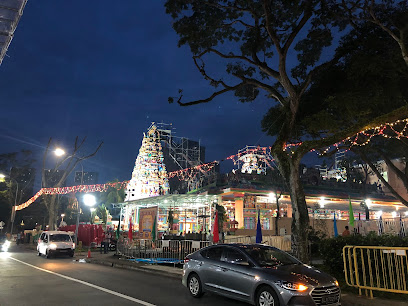
St George's Church
1.4 km
Discover the serene beauty and rich history of St George's Church, an architectural gem and tranquil retreat in Singapore's vibrant Tanglin district.
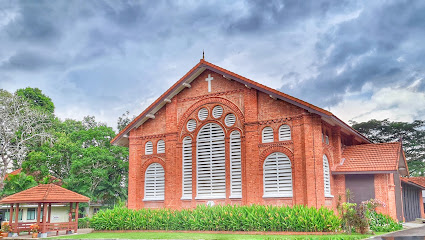
Staircase up Telok Blangah Hill Park
1.6 km
Discover the breathtaking views and scenic trails of Telok Blangah Hill Park, an essential hiking destination in Singapore's vibrant landscape.

Holland Tower
1.6 km
Explore Holland Tower, a stunning symbol of luxury living in Singapore's Tanglin district, surrounded by lush greenery and cultural attractions.
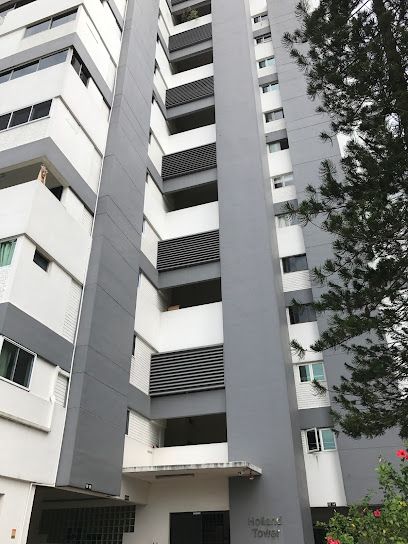
The Holland Collection
1.6 km
Discover The Holland Collection: A tranquil condominium oasis in the heart of Singapore that embodies luxury and nature.

Lookout Point @ Forest Walk
1.7 km
Discover the breathtaking views and lush greenery at Lookout Point in Telok Blangah Hill Park - a perfect escape into nature's beauty.

Istana Woodneuk
1.7 km
Discover the hidden beauty of Istana Woodneuk, a historical landmark in Singapore, where nature and history intertwine in tranquil elegance.

Access to Earth Trail (Telok Blangah Heights)
1.8 km
Explore the breathtaking Access to Earth Trail at Telok Blangah Heights, where stunning views and nature await outdoor enthusiasts.
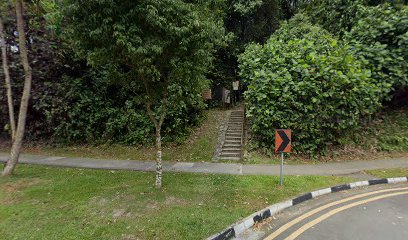
Holland Gems
1.8 km
Experience luxury living at Holland Gems, a serene condominium complex in Tanglin, Singapore, surrounded by lush greenery and modern amenities.

Picnic Hill Top
1.9 km
Explore the beauty of nature at Picnic Hill Top, a serene scenic spot in Bukit Merah, perfect for picnics and breathtaking views.

Native & Cultural Gardens
1.9 km
Immerse yourself in the natural beauty and cultural richness of Singapore at the serene Native & Cultural Gardens in Queenstown.

Keppel Discovery Wetlands
2.0 km
Discover the tranquility of Keppel Discovery Wetlands, a serene park in Singapore where nature thrives and tranquility reigns.

Ginger Garden
2.0 km
Explore the beauty of Ginger Garden in Singapore Botanic Gardens, a serene escape filled with lush greenery and captivating ginger plants.

Singapore Botanic Gardens Gallop Extension
2.0 km
Explore the lush landscapes and serene pathways of Singapore Botanic Gardens Gallop Extension, a botanical paradise in the heart of the city.

Unmissable attractions to see
mimi the mieow
0.7 km
Discover the joy of feline companionship at Mimi the Mieow, a charming cat café in Bukit Merah, Singapore, perfect for relaxation and interaction.

Alexandra Hill East Neighbourhood Park
0.8 km
Experience serenity at Alexandra Hill East Neighbourhood Park, a lush green retreat in Bukit Merah, perfect for relaxation and local culture.

Tong Kia - Wall Mural by Antz
0.8 km
Explore the captivating Tong Kia wall mural by Antz in Bukit Merah, a vibrant representation of Singapore's rich artistic culture and community spirit.

Small chicks and Playground Art Mural
0.9 km
Experience the colorful charm of Small Chicks and Playground Art Mural in Bukit Merah, a delightful family-friendly attraction in Singapore.

MUSEUM OF ICE CREAM SINGAPORE
1.1 km
Experience a whimsical journey through flavors and art at the Museum of Ice Cream Singapore, a must-visit destination for ice cream lovers.

Alexandra Park Connector
1.5 km
Explore the lush pathways of Alexandra Park Connector, a serene urban oasis perfect for leisurely walks, cycling, and enjoying Singapore's natural beauty.

Alexandra Arch
1.7 km
Explore the Alexandra Arch in Singapore: A stunning bridge connecting nature and urban life, perfect for leisurely walks and breathtaking views.

Forest Walk
1.7 km
Explore the breathtaking landscapes and serene paths of Forest Walk in Telok Blangah Hill Park, a must-visit hiking area for nature enthusiasts.

Earth Trail
1.7 km
Discover the breathtaking beauty of Earth Trail, a hidden gem in Bukit Merah for hiking and nature lovers seeking tranquility and adventure.

Southern Ridges
1.7 km
Explore the Southern Ridges, a breathtaking 10-km trail in Singapore connecting lush parks with stunning views and diverse wildlife.

Terrace Garden
1.7 km
Explore the Terrace Garden in Singapore, a lush retreat perfect for relaxation, family outings, and breathtaking views of nature and the city.

Telok Blangah Hill Park
1.7 km
Explore the lush landscapes and stunning panoramas of Telok Blangah Hill Park, a serene nature preserve in the heart of Singapore.

Swan Lake
1.8 km
Discover the tranquil beauty of Swan Lake in Tanglin, Singapore, a perfect natural retreat for nature lovers and peace seekers.

Learning Forest
1.8 km
Explore Learning Forest in Singapore: A breathtaking national forest showcasing rich biodiversity and immersive educational experiences.

Snake Tree
1.8 km
Explore Singapore's heritage at the enchanting Snake Tree in the Botanic Gardens, a unique spot for nature lovers and photographers.

Essential places to dine
TUGA Singapore - Portuguese Restaurant Wine & Gourmet Products
1.1 km
Discover authentic Portuguese cuisine at TUGA Singapore – where every dish tells a story and every sip transports you to Portugal.

Burnt Ends
1.2 km
Discover the exquisite flavors of modern Australian barbecue at Burnt Ends in Singapore's vibrant Dempsey Hill.

The Dempsey Cookhouse and Bar
1.3 km
Experience the culinary artistry of The Dempsey Cookhouse and Bar, where modern European flavors meet serene surroundings in Singapore.

Ce Soir Restaurant
1.3 km
Experience exquisite fine dining at Ce Soir Restaurant in Queenstown, Singapore – where culinary artistry meets elegant ambiance.

Candlenut
1.3 km
Experience authentic Nyonya cuisine at Candlenut, where traditional flavors meet modern dining in Singapore's vibrant culinary scene.

Open Farm Community
1.6 km
Experience the essence of farm-to-table dining at Open Farm Community in Singapore – where fresh ingredients meet innovative culinary artistry.

Canopy HortPark
1.9 km
Experience exquisite dining amidst lush greenery at Canopy HortPark – where culinary artistry meets nature's beauty.

Fat Cow - Japanese Wagyu @ Camden Medical Centre
2.1 km
Experience unparalleled culinary artistry at Fat Cow, Singapore's premier destination for exquisite Japanese Wagyu steak and authentic Asian flavors.

The Halia at Singapore Botanic Gardens
2.1 km
Discover culinary excellence at The Halia in Singapore Botanic Gardens, where exquisite flavors meet breathtaking natural beauty.

Summer Garden 悦之圜
2.1 km
Explore Summer Garden 悦之圜: A tranquil dining oasis in SAFRA Mount Faber Club offering delectable dishes amidst nature's beauty.

La Veranda
2.2 km
Experience the charm of La Veranda in Singapore – where delightful brunch meets vibrant atmosphere in Tanglin Mall.

Tanglin Cookhouse (Tanglin Mall)
2.2 km
Discover the taste of Singapore at Tanglin Cookhouse—where culinary creativity meets local flavors in an inviting atmosphere.

Old Habits Cafe
2.2 km
Discover the vibrant flavors of Asia at Old Habits Cafe, where culinary creativity meets a cozy atmosphere in the heart of Singapore.

Hopscotch (Gillman Barracks)
2.2 km
Discover culinary creativity at Hopscotch in Gillman Barracks – where grilled delights meet innovative cocktails in an artistic setting.

Guzman y Gomez - Mapletree Business City
2.2 km
Experience authentic Mexican cuisine at Guzman y Gomez - Mapletree Business City, where fast food meets vibrant flavors in Singapore.

Markets, malls and hidden boutiques
Anchorpoint
0.7 km
Explore the vibrant shopping scene at Anchorpoint in Singapore, where retail therapy meets delightful dining and entertainment.

A B C Gifts & Souvenirs Centre
0.9 km
Explore a vibrant collection of unique gifts and authentic souvenirs at A B C Gifts & Souvenirs Centre in Singapore, perfect for every traveler.

Queensway Shopping Centre
0.9 km
Explore the vibrant shopping and dining scene at Queensway Shopping Centre, Singapore's unique shopping destination with something for everyone.
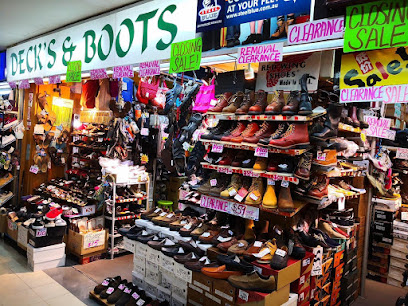
Aki's Bazaar
0.9 km
Explore Aki's Bazaar in Singapore for unique gifts and souvenirs that capture the essence of local culture and creativity.

The Animal Project
1.1 km
Discover the whimsical world of animal-themed gifts at The Animal Project, a charming shop in Singapore's Bukit Merah area.

Dover Street Market Singapore
1.3 km
Explore the innovative blend of fashion and art at Dover Street Market Singapore, where every visit reveals unique designer treasures.

Ikada Bakery & Confectionery
1.4 km
Discover the exquisite flavors of Ikada Bakery & Confectionery in Singapore, where delightful pastries and artisan treats await every visitor.

Depot Heights Shopping Centre
1.4 km
Discover the vibrant Depot Heights Shopping Centre in Bukit Merah, Singapore - a shopping paradise with diverse stores, dining options, and local charm.

The Stacked Store
2.0 km
Explore The Stacked Store in Singapore for unique homewares that reflect local culture and creativity, perfect for gifts or personal treasures.

Foto88 Holdings Pte Ltd
2.1 km
Discover unique gifts and souvenirs that capture the essence of Singapore at Foto88 Holdings, the ultimate gift shop for travelers.

Tanglin Mall
2.1 km
Explore luxury shopping and diverse dining at Tanglin Mall, Singapore's premier shopping destination blending modern elegance with local charm.

Firefly Boutique
2.1 km
Explore Firefly Boutique in Singapore for exquisite women's clothing, blending style with a personalized shopping experience.

Badger & Fox Singapore
2.2 km
Discover unique fashion, accessories, and homewares at Badger & Fox Singapore, where every item tells a story of culture and creativity.
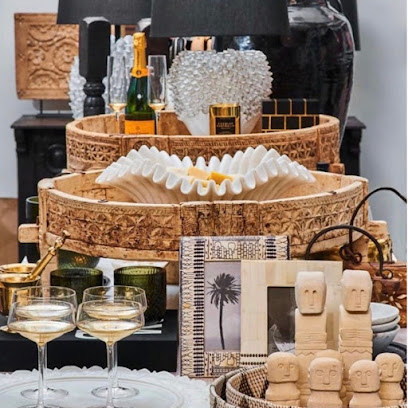
Silk Walk
2.2 km
Explore Silk Walk in Singapore - your destination for unique gifts and authentic souvenirs that celebrate local craftsmanship and artistry.

Shopping At Tiffany's
2.2 km
Explore the elegance of Shopping At Tiffany's, a premier boutique in Singapore offering exquisite women's clothing and fashion accessories.

Essential bars & hidden hideouts
Margie The Market Bar
0.6 km
Discover the lively Margie The Market Bar in Queenstown, Singapore, where great drinks and delicious food meet a vibrant atmosphere.

Danger Close Beverage Company
1.0 km
Discover artisanal drinks and a vibrant atmosphere at Danger Close Beverage Company in Bukit Merah, Singapore.

Rooftop Cafe & Bar
1.0 km
Experience the stunning skyline of Singapore at Rooftop Cafe & Bar, where exquisite drinks and breathtaking views come together for an unforgettable evening.

Elixir Code
1.1 km
Discover Elixir Code in Bukit Merah, Singapore - a unique bar and beer store offering a delightful selection of craft beers and fine wines in an inviting atmosphere.

Cuvee Singapore
1.3 km
Discover Cuvee Singapore, where exquisite wines and a cozy ambiance create the perfect escape for wine lovers in Queenstown.

Handlebar
1.8 km
Discover Handlebar, Singapore's iconic biker-themed grill and bar, offering delicious food, craft beers, and a unique atmosphere for all visitors.

1918 Heritage Bar at The Alkaff Mansion
1.8 km
Discover the charm of 1918 Heritage Bar at The Alkaff Mansion, where exquisite cocktails meet historical elegance in Singapore's vibrant nightlife.

The Blackbird
1.9 km
Experience the vibrant nightlife at The Blackbird, a live music bar in Bukit Merah, Singapore, where great music and drinks come together.

Bones 'n Barrels Alexandra
2.1 km
Delight in expertly grilled dishes at Bones 'n Barrels Alexandra, a culinary gem in Singapore's vibrant Alexandra Technopark.

Forest5 Darts Cafe
2.1 km
Discover the thrill of dart games and vibrant nightlife at Forest5 Darts Cafe, a must-visit dart bar in Singapore's Mount Faber area.

Turandot Music . Restaurant . Bar
2.1 km
Discover a lively atmosphere at Turandot Music Restaurant & Bar, where live music meets exquisite cuisine in the heart of Singapore.

Little Island Brewing Co @ Gillman Barracks
2.2 km
Discover a vibrant brewpub experience at Little Island Brewing Co in Gillman Barracks, Singapore, where craft beer meets local culture.

Bedz KTV Pub
2.2 km
Discover the ultimate karaoke experience at Bedz KTV Pub, Singapore's lively hotspot for music, drinks, and unforgettable nights out.

The House Bar
2.2 km
Experience the vibrant nightlife at The House Bar, a stylish oasis in Singapore’s Orchard district, offering exquisite drinks and a chic ambiance.

Darts Buddy Pizzeria Bistro Sports Bar
2.3 km
Discover the excitement at Darts Buddy Pizzeria Bistro Sports Bar, where great food meets thrilling sports in the heart of Singapore.




